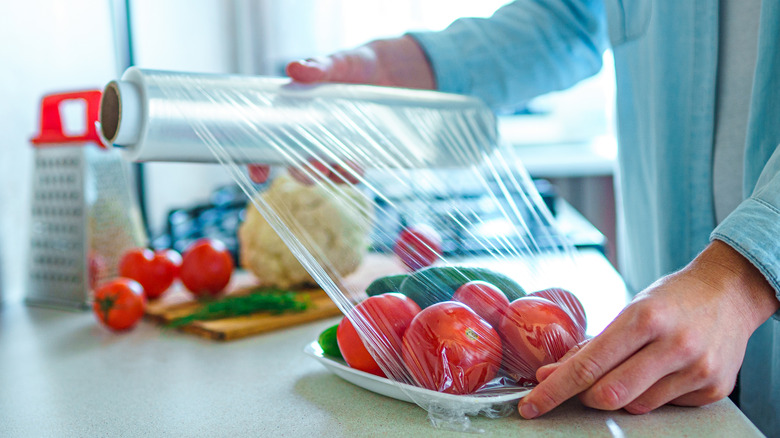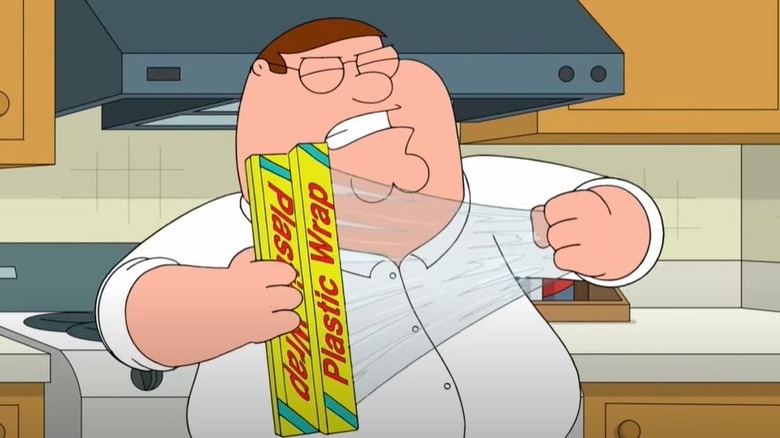Why You Need To Start Putting Plastic Wrap In The Freezer
Perhaps the most bittersweet combination of after-dinner feelings is the happy realization that you have enough food left over for tomorrow and the subsequent dread of remembering that to save it, you have to cover it in cling wrap.
While plastic wrap is undeniably handy for keeping food fresh in the fridge, it's an absolute pain to use, always clinging to itself and tangling into near-unusable balls that take forever to uncrumple. If you're one of the countless people who've had this struggle, how would you like to know there is one easy storage trick that can make it go away?
No, it's not "buy more plastic containers and reusable bags," which, while useful, can be expensive and take up a lot of space. To stop that clingy plastic wrap problem, all you need is your own freezer.
Today notes that storing your plastic wrap in the freezer, instead of in the cabinet or drawer with the aluminum foil and sandwich bags, will make it easier to work with because the lower temperature alters the molecular structure of the plastic, making it less sticky.
Physics professor Dr. Chad Orzel compared the process to trying to use duct tape outdoors during the winter. "Conventional adhesives don't really work well in cold weather," he told Today. "The adhesion between pieces of plastic may be driven by the molecules in the surface rearranging themselves to form weak chemical bonds and the lower temperature may inhibit that process a bit."
It's electric
In addition to weakening the plastic's adhesive properties, the freezer cuts down on another issue faced by plastic wrap users: static electricity.
According to Science Focus, plastic wrap is made from PVC (polyvinylidene chloride) or polyethylene and is treated to make it stretch and adhere. When you unroll a piece of plastic wrap, electrons are pulled from one layer to another, creating a static electrical charge that creates the ever-frustrating balls of plastic we struggle to put over our leftover potato salad.
Reader's Digest notes that the cold air will reduce the static charge on the cling wrap, making it easier to unroll and cut without sticking to itself, but without rendering it completely ineffective, since the materials regain their stickiness within a few minutes of being in the warm air.
If this tip sounds like a dream come true, but you're looking at a freezer full of meat and ice cream thinking, "I don't have room to keep my plastic wrap in here," fear not! Today also notes that permanent storage isn't necessary. While a longer chill will make the tip more effective, popping the plastic in the freezer at least 15 to 20 minutes before you're going to need it (so possibly as you sit down to eat if you expect you'll have leftovers) will have you good to go and static free.

